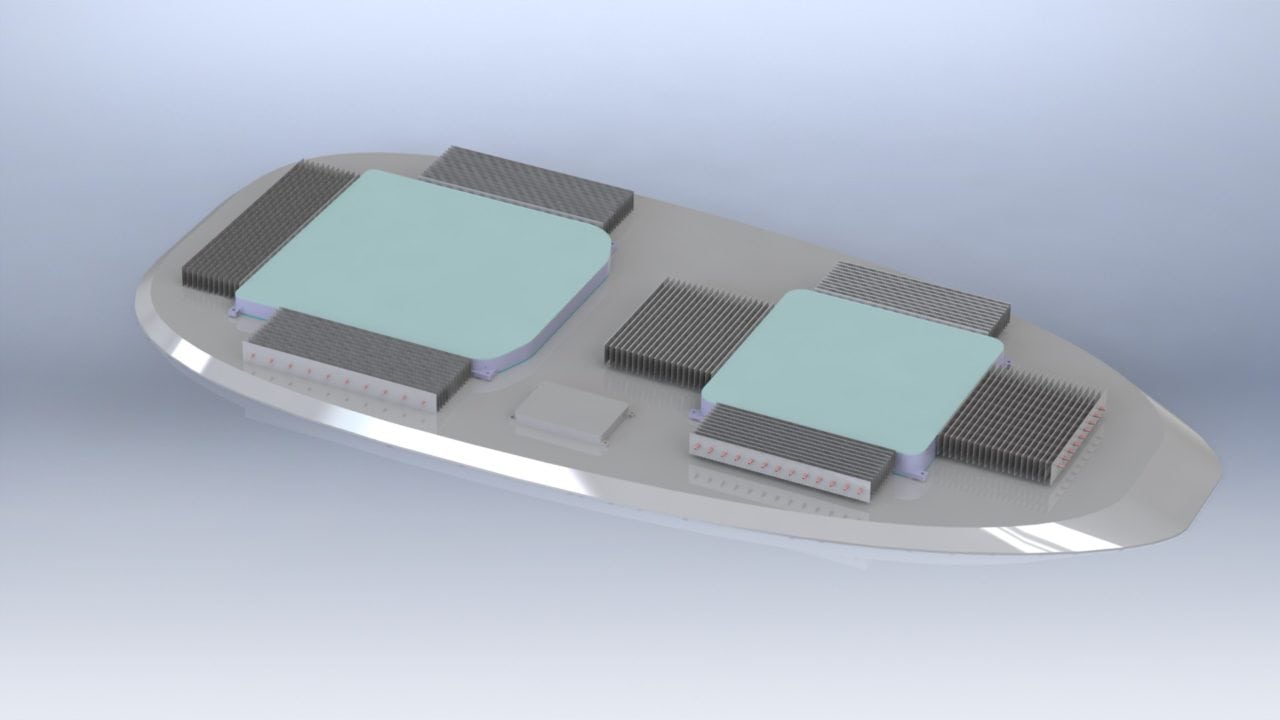[Avionics Today 02-18-2016] Gilat is bolstering its investment in phased array antenna systems in hopes of securing a foothold in the aeronautical connectivity market. The company, which already has some phased array antennas on the market, is looking for partners in the aviation space, viewing aeronautical connectivity applications as the biggest market.
 |
| Digital rendering of Gilat’s phased array antenna. Photo: Gilat |
“The primary market that we are focusing on now is the aviation market,” Michael Barak, regional vice president of commercial aviation and mobility at Gilat, told Avionics Magazine. “We are looking for a lead customer to take our existing Ku arrays, which are already commercially available, and tailor them to the requirements of aeronautical applications.”
Gilat is building a new iteration of antennas based on technology originally developed by RaySat. At the time of development, RaySat invested in phased array technology for AT&T CruiseCast, a satellite-based connected car service that fizzled out in 2009. Gilat acquired RaySat in 2010 and continued investing in phased array technology for purposes beyond the connected car.
“We think the technology is most suited for regional jets,” explained Barak. “Those are smaller aircraft that either cannot or don’t want to carry mechanical steered antennas. It is a space/size issue, and we think that our phased array antennas are an excellent size performance fit for this kind of aircraft.”
Barak said a large part of Gilat’s continued investment in phased array antennas was to complete RaySat’s development in Ku band and initiate development in Ka band. In 2012 the company created Monolithic Microwave Integrated Circuits (MMICs) for both bands, and late last year Gilat signed a Ku and Ka phased array antenna development agreement with a major aerospace systems integrator. In addition to looking for a partner for its Ku-band aviation antenna, Gilat is continuing progress in aeronautical Ka, though Barak said this project would require more time.
“We are now working on our Ka-band array, so there would be a commercial version available about two years from today. We should be in the same position with Ka as we are with Ku today in about 18 to 24 months,” he said.
The aero market is a frontrunner when it comes to flat-panel, low profile antennas, according to NSR Analyst Prateep Basu, who recently co-authored a report on the technology.
“The complexity of building, certifying and operating satcom antennas on airplanes impacts their price as well. But since it’s a ‘must’ to fly Flat Panel Antennas (FPAs) due to their lower Size, Weight and Power (SWaP) and lower drag. NSR believes this market will show great opportunities,” Basu told Avionics Magazine.
Barak said the unique origin of Gilat’s antennas makes them much more cost effective for the regional aviation market, especially when compared to other older phased array designs. Coming from AT&T CruiseCast, the antennas needed to be much lower cost than those created for military applications, which was the impetus for most other phased array antennas projects.
“AT&T gave us at the time a price target of below $500 for a receive-only terminal. The whole technology was built around low price, and to achieve that we are using two very standard technologies. One is ‘cheap technology;’ just standard existing sub-processors. We are utilizing a process of 0.18 micron today and we are looking to a transition to a 0.13 micron process, but these are all existing,” said Barak.
The Printed Circuit Board (PCB) for Gilat’s phased array antenna supports the antenna element on one side and the MMIC on the other. Barak said this brings the potential for very low manufacturing costs. He estimated the size of the antenna as roughly 5 centimeters all in all, including the radome, PCB and baseplate, though this depends on the size of the array, as larger arrays necessitate more heat sinks. Currently the antennas have receive-and-transmit arrays in separate apertures, though Barak said Gilat does see a market requirement to have a unified receive and transmit array, and may address this for aeronautical applications in the future.